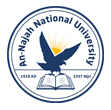Abstract
Since March 5, 2020, the West Bank has faced a real crisis due to the Coronavirus dis-ease 2019 (COVID-19) pandemic. It has infected 581,678 people and caused 5,382 deaths so far, which has resulted in negative impacts on public health and other aspects of daily life. Based on the data provided by the Palestinian Ministry of Health, we inferred the spatial dis-tribution patterns of the pandemic condition in different communities using Geographic In-formation System (GIS) analysis for pattern and clustering by studying the impact of urban factors on the number of confirmed COVID-19 cases. Ten urban factors were selected (i.e., population, population density, aging ratio, the hierarchy of services, health services, land use, commercial services, road density, green areas, and open spaces) to check their relation to pandemic severity using a linear model, where five factors showed a globally-significant relation. Then, the Geographically Weighted Regression' model (GWR) was adopted to de-fine their unevenly distributed effects in the urban areas on the northwest bank. Among the five factors, the population factor has the most significant impact on the epidemic situation with a positive correlation. However, a negative correlation has been stated between the area of commercial services per person, population density, hierarchy of services, and health ser-vices. Finally, we provide recommendations that coordinate various urban factors to mitigate the pandemic spread. This paper will help decision-makers plan and develop different areas in Palestine and worldwide by better understanding the transmission, occurrence, and diffu-sion of the COVID-19 pandemic in urban areas.
Digital Object Identifier (DOI)
10.59049/2790-0231.1095
Recommended Citation
Qanazi, Saleh; Hijazi, Ihab; Toma, Anas; Abujayyab, Sohaib; Dehbi, Youness; Zabadae, Shaker; and Li, Xin
(2022)
"Covid-19 severity and urban factors: investigation and recommendations based on ma-chine learning techniques,"
Palestinian Medical and Pharmaceutical Journal: Vol. 7
:
Iss.
2
, Article 14.
Available at: https://doi.org/10.59049/2790-0231.1095


